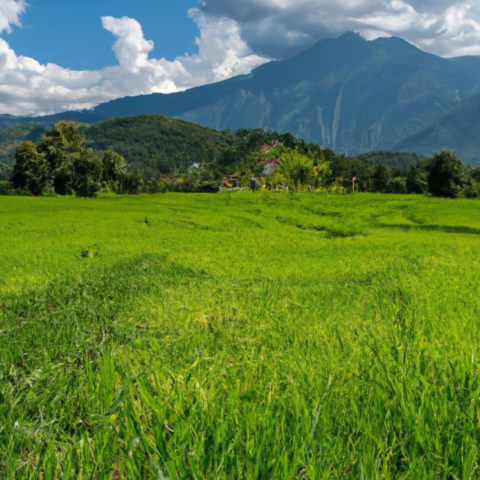What is a Paddy Field
Paddy fields are one of the main features of the rural landscape in many parts of Southeast Asia. The paddies, which are flooded with water to irrigate the rice plants, can be seen stretching away as far as the eye can see.
They can also produce upland rice. However, artificial rice products are made in a factory so that is one distinction.
They are an essential part of the local culture and economy, and a trip to Southeast Asia is not complete without a visit to some paddy fields. What is a paddy field exactly?
When the paddy field has lots of water, or is perhaps in a flood plane, deepwater rice would be planted.
What is a Paddy Field?
A paddy field is a farming system that follows a dry season and a wet season where rice crops are grown in flooded conditions. It requires a lot of work in every stage of rice growth and attention to cultivate and properly harvest rice crops.
Paddy fields are also used to grow vegetables like taro also.
Where Do Paddy Fields Grow in the World?
Paddy fields are primarily found in tropical and subtropical regions, where the climate is warm and stable throughout the year. Some of the most prominent paddy-growing areas and exporters of rice production include countries like Thailand, Vietnam, India, Indonesia, China, and Japan.
These vast rice paddies can be seen sprawling across vast swathes of land, providing a picturesque and serene landscape that is truly a sight to behold.

Despite their prevalence in these regions, paddy fields are threatened by several environmental factors, including climate change and land degradation. These issues can disrupt the delicate balance of nutrients within the soil, causing yields to decline and reducing overall crop production. Therefore, we must work to protect and preserve these critical agricultural areas so that future generations can continue to reap the benefits of paddy fields for many years to come.
How are Paddy Fields Used?
The primary purpose of paddy fields is to provide rice farmers with an ideal environment for growing rice plants. They do this by providing optimal soil organic conditions, as well as a regular supply of water.
This makes rice paddy fields a vital resource for ensuring food security in many parts of the world.
Furthermore, paddy fields are also used to support local communities and economies.
They provide farmers with a way to earn income by selling their crops, which helps boost economic growth and development in rural areas.
What Grows in Paddy Fields?
Paddy fields are generally well-suited for growing rice, as this is one of the most important crops in these areas. Rice is a staple food for many people around the world, and it requires specific conditions in order to thrive.
Paddy fields provide those conditions, offering ample water, rich soil, and plenty of sunshine for the rice plants to flourish.
Other crops that are commonly grown in paddy fields include many kinds of fruits and vegetables. These crops are typically planted in the rainy season when the soil is at its richest and most nutrient-dense.
Some common examples of these types of foods include leafy greens like spinach, carrots, eggplants, squash, melons, tomatoes, and many others.
The Benefits of Paddy Fields
Paddy fields are some of the most valuable agricultural lands on Earth and have become a major source of many benefits and advantages.
These include increased crop yields, reduced soil erosion, improved water quality, and support for local communities.
Paddy fields are also significant global contributors to atmospheric greenhouse gases, including methane and nitrous oxide emissions.
Some Problems in Paddy Fields
One of the biggest problems many farmers encounter when working in paddy fields is weed growth. Weeds compete with crops for sunlight, water, and nutrients, making it difficult for them to thrive and grow.
In addition, weeds can harbor pests and diseases that can infect your plants and reduce yields.
Many farmers use herbicides and other chemical pesticides to control weed growth to address this problem. While these chemicals can be effective, they also come with a number of drawbacks.
For example, many of these chemicals are toxic and can harm weeds, the surrounding environment, and wildlife.
Fortunately, there are alternative approaches that farmers can use to manage weeds in their paddy fields. Some of these methods include crop rotation, tilling and cultivating the soil, and using natural herbicides such as vinegar or salt solutions. Ultimately, it is up to each individual farmer to decide which approach is best for their unique situation.
How Can We Make Paddy Fields More Sustainable
We can use several key strategies to protect and preserve these important ecosystems, including reducing pollution and contamination, using sustainable agricultural practices, and promoting better land management techniques.
By focusing on these key strategies, we can help ensure that paddy fields remain healthy and resilient well into the future.
And in doing so, we can promote food security, economic stability, and environmental sustainability for all.